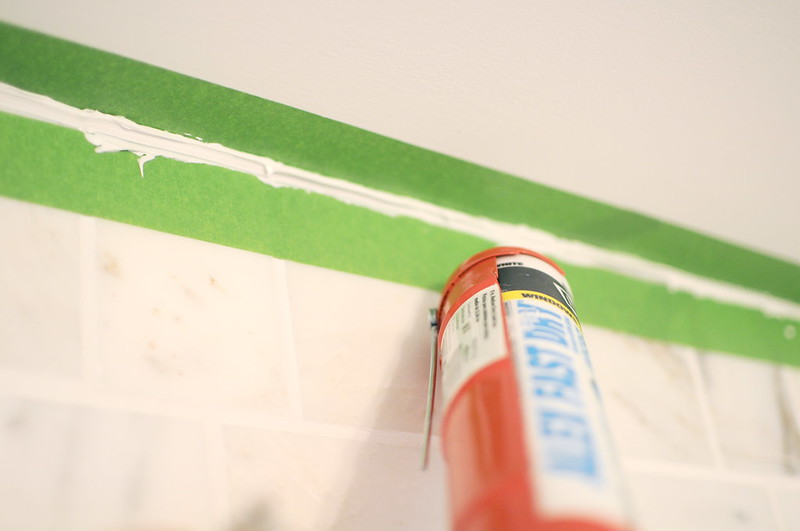Caulk
 Caulk is filler material commonly used by decorators. Most caulks are more rigid than sealants, but more flexible than other fillers when they dry and can be used where movement or leakage can occur - as long as significant expansion or contraction is not anticipated.
Caulk is filler material commonly used by decorators. Most caulks are more rigid than sealants, but more flexible than other fillers when they dry and can be used where movement or leakage can occur - as long as significant expansion or contraction is not anticipated.
Historically, caulk was made from fibrous materials that could be driven between boards, pipes and so on to make them waterproof. Rope caulks are still available and are primarily used to reduce drafts, and sound transmission, especially around windows.
Modern caulk is also waterproof. It is typically made from acrylics, vinyl or silicone. These materials dry quickly and remain relatively flexible. It can be used to close small gaps and crevices. It prevents air, insects, rodents and dust from compromising the integrity of seals, spaces and structures.
Acrylic caulk can be painted after it has dried completely. However, painted caulk can crack if it is applied in temperatures lower than four degrees Celsius. Silicone caulk cannot be painted.
Caulk is generally sold in cartridges that can be inserted into caulking guns. This technique helps to control the application process. If spills and smears occur during the process, they can be cleaned up with water rather than solvents.
It is possible to caulk over old acrylic caulk, unless the old caulk is oily, dirty or has deteriorated significantly (in which case, the new caulk will not adhere). Caulk should not be applied over old caulk that is wet or has mould or mildew.
[edit] Related articles on Designing Buildings
Featured articles and news
RTPI leader to become new CIOB Chief Executive Officer
Dr Victoria Hills MRTPI, FICE to take over after Caroline Gumble’s departure.
Social and affordable housing, a long term plan for delivery
The “Delivering a Decade of Renewal for Social and Affordable Housing” strategy sets out future path.
A change to adoptive architecture
Effects of global weather warming on architectural detailing, material choice and human interaction.
The proposed publicly owned and backed subsidiary of Homes England, to facilitate new homes.
How big is the problem and what can we do to mitigate the effects?
Overheating guidance and tools for building designers
A number of cool guides to help with the heat.
The UK's Modern Industrial Strategy: A 10 year plan
Previous consultation criticism, current key elements and general support with some persisting reservations.
Building Safety Regulator reforms
New roles, new staff and a new fast track service pave the way for a single construction regulator.
Architectural Technologist CPDs and Communications
CIAT CPD… and how you can do it!
Cooling centres and cool spaces
Managing extreme heat in cities by directing the public to places for heat stress relief and water sources.
Winter gardens: A brief history and warm variations
Extending the season with glass in different forms and terms.
Restoring Great Yarmouth's Winter Gardens
Transforming one of the least sustainable constructions imaginable.
Construction Skills Mission Board launch sector drive
Newly formed government and industry collaboration set strategy for recruiting an additional 100,000 construction workers a year.
New Architects Code comes into effect in September 2025
ARB Architects Code of Conduct and Practice available with ongoing consultation regarding guidance.
Welsh Skills Body (Medr) launches ambitious plan
The new skills body brings together funding and regulation of tertiary education and research for the devolved nation.
Paul Gandy FCIOB announced as next CIOB President
Former Tilbury Douglas CEO takes helm.
UK Infrastructure: A 10 Year Strategy. In brief with reactions
With the National Infrastructure and Service Transformation Authority (NISTA).























Comments
[edit] To make a comment about this article, click 'Add a comment' above. Separate your comments from any existing comments by inserting a horizontal line.